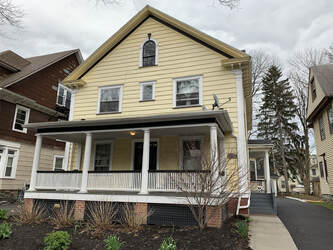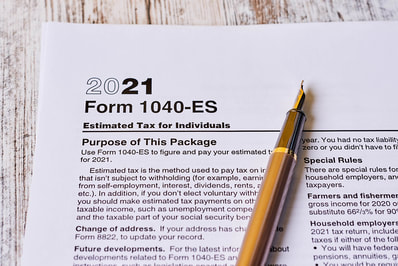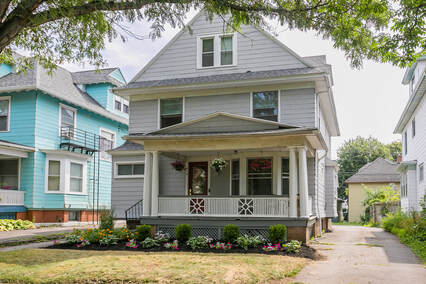 The busy season in leasing, move ins and move outs is nearly at our door step. Like most management companies and real estate investors, we have a majority of our lease expirations stacked in the spring to summer months. The reason for this is quite simple, in our region this is the season people think about moving. The reasons your resident might want to move can be one of many. Either they are wanting to purchase a home, consolidate households (people moving from a 1 bedroom to sharing a 2 bedroom apartment with someone else), deconsolidate households (think of three roommates wanting to get their own studio or one bedroom), poor living conditions or poor maintenance performance from their housing provider. Most reasons your residents choose to move out are controllable. That's why it's best to have a comprehensive retention strategy in place to keep your residents longer. By the way, a move out costs a property owner on average $2500 per unit, between vacancy loss, make ready costs, and leasing fees! For information on our retention strategy, visit our blog post here. But some move outs are just unavoidable. The typical property owner will post their apartment home as available 30-60 days prior to the current residents move out date. And then perform their make ready of the unit after the current resident moves out. This type of make ready work can consist of cleaning, painting, and other minor repairs which can cost most property owners from as little as two weeks to one month of vacancy loss. If you multiply this over several units, the costs from vacancy loss alone can be staggering. For instance, if you apply this scenario to our portfolio of 102 units, assume we have a 50% turn over per year or 51 units, with an average market rent of $800 per month. If we incur 2 weeks to 1 month of vacancy loss, this can translate to a yearly vacancy and collection loss of $20k to $40k per year! That's essentially someone's salary! Having a vacancy management strategy in place is mission critical to the sustainability of your business! Here are some tactical stuff that we use to manage minimal vacancy loss as a management company:
In addition to helping reduce vacancy loss, these tactics will be helpful to having a more pleasant move in experience for your incoming tenant. Remember, if your new residents have a bad move in experience, they will hold it against you, and you can take the likelihood of them renewing their lease next year and kiss it good bye! We hope that these tips help you in making your rental business more profitable and your residents much happier!
0 Comments
 Taxes are one of the largest single expenses that Americans face on a yearly basis. The IRS wrote a rule book intended for you to take advantage of their rules in order to reduce your taxes. A couple of weeks ago, I posted a video (on social media) about how one of our investment partners earned tax free (more accurately tax deferred) cash flow on a deal they partnered with us on. Not only that, but they grew their net worth without growing their tax liability. Not only that, but their investment also earned paper losses which sheltered income from their job, helping them save $5,000 on their Federal income tax bill alone! How is this possible? Watch my really cool fast paced video explanation above! Or you can read it here: We typically purchase properties with an 8.5% percent rate of return before annual debt service (ADS); this is also known as an 8.5% cap rate (capitalization rate). So on a million dollar multifamily property, it would throw off $85,000 in net operating income (NOI); we would have a 27.5 year depreciation schedule on that property or $36,000 in annual depreciation expense. Now depreciation is a "paper" expense, not an actual one. The IRS allows you to use it to offset current income. Since we typically don't have $1,000,000 laying around, we rely on our banking relationships to help us buy the property. Banks will lend you up to 70% to 80% of a property's appraised value. So lets assume we secure a loan that is 80% loan to value (LTV) on a 20 year amortization at 4.5% interest. The annual debt service on this loan would be $60,734, giving us a before tax cash flow (BTCF) of $24,266 or a cash on cash rate of return of 12% (Before Tax Cash Flow Divided by Down Payment.) Unfortunately the IRS does not allow for deduction of principal pay down. For simplicity sake let's just assume that the interest portion of the ADS is $35k. So if we take our $85,000 NOI and subtract the $35,000 interest payment, we would have a taxable profit of $50,000. If we didn't have depreciation as a tool provided to us by the IRS, our annual tax on that profit would be $15,000, assuming you have a blended tax rate of 30%. But because WE DO have depreciation as a tool, we would subtract the $36,000 depreciation expense from that profit, effectively reducing the taxable income to $14,000, which reduces our tax to $4,200 on that investment income; a $10,000 annual tax saving! Why is reducing your taxes important? Yes, sure it's cool to have more money in your pocket to buy stupid things you don't need, but the real power is in the time value of money. If you save on taxes now and reinvest those savings over time, it has an INCREDIBLE power to grow your wealth exponentially! Now the $10k tax savings illustrated in this video doesn't seem to be a lot of money, but consider it's reinvestment potential over time. If you save $10k a year in taxes, reinvest that sum with a 15% annual rate of return (which is generally what we earn on our deals), over a 30 year period, you would wind up with over $7 million dollars! Plus the more property that you buy, improve and leverage over time the more depreciation and paper losses you generate which can help you shelter income tax liability on your earned (W-2 or 1099) income. Since we buy and develop value add commercial investment property, we generate paper losses which also helps all of us shelter earned income from our jobs too. See we typically purchase underperforming, under improved property which we fix up and do capital improvements on. Thanks to bonus depreciation, we can accelerate the depreciation on these capital improvements faster than the 27.5 - 29 year the IRS allows us normally. You need a tax strategy. That's what your accountant is for, talk to them! |
AuthorThis blog serves an an outlet for all of our invaluable team members to share their insight on development, property management, and all things affecting real estate in our community. Archives
July 2023
Categories |


 RSS Feed
RSS Feed